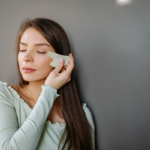Clay masks have become a popular skincare trend in recent years, with claims of detoxifying, purifying, and rejuvenating the skin. But are these claims based on solid evidence, or are clay masks just another fleeting fad?
In this in-depth article, we delve into the world of clay masks to explore their benefits, how they work, and whether they truly deserve a place in your skincare routine. Get ready to unmask the truth about clay and discover if it’s a skincare superstar or simply a passing trend.
Understanding Clay and its Types

Clay masks typically contain various types of clay, each with its unique properties and benefits. For example, kaolin clay is gentle and suitable for sensitive skin, while bentonite clay has stronger absorption properties, making it ideal for oily or acne-prone skin. Rhassoul clay is known for its ability to balance oil production, and French green clay helps to purify and detoxify the skin.
Understanding the different clay types will help you choose the one that suits your skin’s needs. Below are some of the most common benefits of using clay masks…
1. Deep Cleansing and Detoxification
One of the key benefits of a clay mask is its ability to deeply cleanse and detoxify the skin. Clay has an exceptional ability to draw out impurities, excess oil, and toxins from the pores, leaving the skin refreshed and revitalized. The clay particles bind to debris and dead skin cells, helping to unclog pores and prevent breakouts. Regular use of a clay mask can promote a clearer complexion and reduce the appearance of blackheads and whiteheads.
2. Oil Control and Balancing
Clay masks are particularly beneficial for individuals with oily or combination skin. The absorbent properties of clay help absorb excess oil, reduce shine, and regulate sebum production. By balancing oil levels, clay masks can help prevent the formation of blemishes and promote a more matte appearance. However, individuals with dry or sensitive skin should use clay masks with caution, as they may lead to over-drying.
3. Exfoliation and Smoother Texture
In addition to their cleansing abilities, clay masks also provide a gentle exfoliation effect. As the mask dries and is rinsed off, it naturally sloughs away dead skin cells, promoting a smoother and more refined skin texture. Regular use of clay masks can help improve skin tone, reduce the appearance of fine lines, and enhance overall radiance.
Read: How Often Should You Exfoliate Your Face? 7 Expert Tips
4. Soothing and Calming
Contrary to popular belief, clay masks can also offer soothing and calming benefits for sensitive or irritated skin. Certain clay types, such as white kaolin clay or pink clay, are known for their gentle and mild properties. They can help soothe inflammation, reduce redness, and provide a calming effect on the skin. However, individuals with severe skin conditions should consult a dermatologist before using clay masks.
5. Enhancing Product Absorption
Another advantage of clay masks is their ability to enhance the absorption of other skincare products. After using a clay mask, the skin is primed and ready to absorb the active ingredients of serums, moisturizers, and treatments. Applying your favorite products immediately after a clay mask can amplify their effectiveness and provide deeper hydration and nourishment to the skin.
6. Personalization and DIY Options
One of the fascinating aspects of clay masks is their versatility and the ability to customize them according to individual needs. You can create your own DIY clay masks by combining clay powders with other natural ingredients like honey, yogurt, or essential oils. This allows you to tailor the mask to address specific concerns, such as hydration, brightening, or soothing, for a truly personalized skincare experience.
The Side Effects of Clay Masks

While clay masks offer numerous benefits, it’s essential to be aware of potential side effects to ensure a safe and enjoyable skincare experience. Let’s delve into the topic and understand the precautions necessary when using clay masks.
1. Over-Drying and Dehydration
Clay masks have absorbent properties that draw out impurities and excess oil from the skin. However, if left on for too long or used too frequently, they can lead to over-drying. This can cause tightness, discomfort, and flakiness, particularly for individuals with dry or sensitive skin. To prevent over-drying, it’s crucial to follow the recommended usage instructions and avoid leaving the mask on for longer than specified.
2. Irritation and Redness
Some individuals may experience skin irritation and redness after using clay masks, especially those with sensitive or reactive skin. This can be attributed to the potent cleansing properties of the clay, which may temporarily disrupt the skin’s natural barrier. If you have sensitive skin, consider patch-testing the mask on a small area before applying it to your entire face. Additionally, opt for clay masks specifically formulated for sensitive skin or choose gentler clay types such as white kaolin clay.
3. Increased Sensitivity to Sun
Certain types of clay, particularly those with exfoliating properties like bentonite clay, can make the skin more sensitive to sunlight. This increased sensitivity may result in a higher risk of sunburn or sun damage if adequate sun protection measures are not taken. It is essential to apply a broad-spectrum sunscreen with an appropriate SPF after using a clay mask and to limit sun exposure or use protective clothing while the skin is more susceptible.
Read: How to Cure Sunburn with Home Remedies
4. Skin Tightness and Discomfort
As clay masks dry, they can cause a temporary feeling of skin tightness and discomfort. This sensation is normal and usually subsides once the mask is rinsed off. However, if the tightness becomes excessively uncomfortable or persists after removing the mask, it’s advisable to discontinue use and consult a dermatologist.
5. Allergic Reactions
While rare, some individuals may experience allergic reactions to certain ingredients found in clay masks. These reactions can manifest as itching, redness, swelling, or hives. It’s important to read the ingredient list carefully and avoid using a clay mask if you have known allergies to any of the components. If you notice any signs of an allergic reaction, discontinue use immediately and seek medical advice.
Precautions and Tips for Safe Use

Follow instructions: Always read and follow the instructions provided with the clay mask, including recommended application time and frequency.
Patch test: Perform a patch test by applying a small amount of the mask to a small area of your skin and observing for any adverse reactions before using it on your entire face.
Moisturize: After using a clay mask, replenish moisture by applying a gentle moisturizer suitable for your skin type. This helps prevent over-drying and maintains the skin’s hydration balance.
Sun protection: Apply a broad-spectrum sunscreen with an appropriate SPF after using a clay mask to protect your skin from harmful UV rays.
Use as directed: Avoid leaving the mask on for longer than recommended, as extended exposure may increase the risk of side effects.
Avoid eye area: Clay masks should not be applied to the delicate skin around the eyes to prevent potential irritation or discomfort.
Conclusion
Clay masks have stood the test of time as a skincare ritual for a reason. Their deep cleansing, detoxifying, and balancing properties make them a valuable addition to any skincare routine. From oily to sensitive skin types, clay masks offer a range of benefits, including purifying pores, controlling oil, exfoliating, and enhancing product absorption.
However, it’s crucial to be aware of potential side effects and take appropriate precautions to ensure a safe and enjoyable experience. By following instructions, patch-testing, moisturizing, using sun protection, and being mindful of individual skin sensitivities, you can maximize the benefits of clay masks while minimizing the risk of side effects.
Remember, skincare is a personal journey, and understanding your skin’s needs is key to achieving healthy and radiant results.




